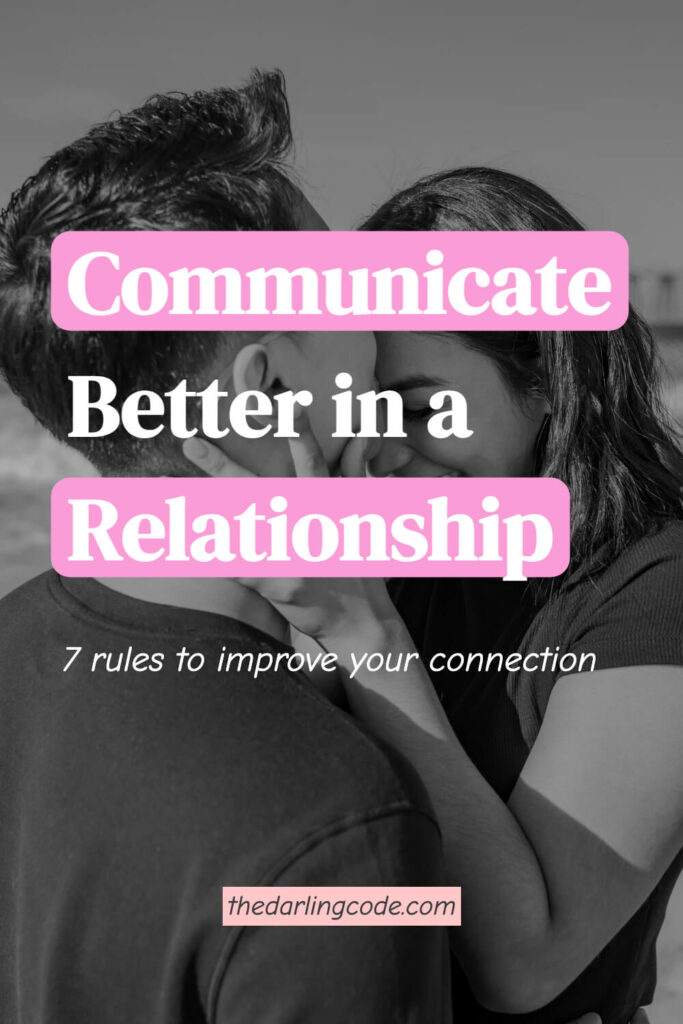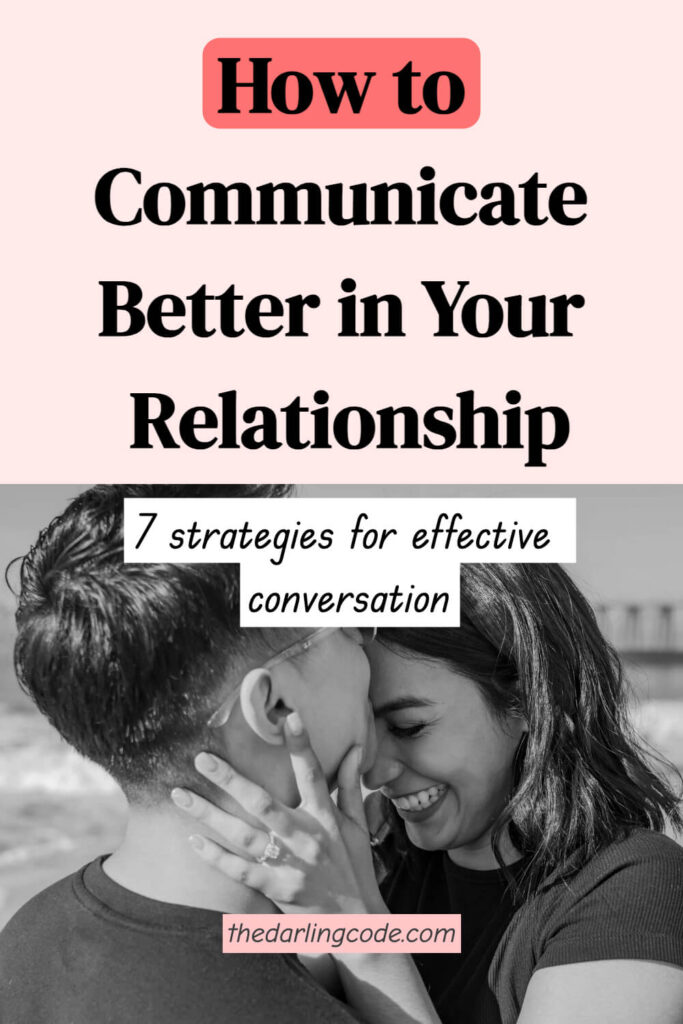How to Communicate Better in a Relationship: 7 Rules and Everyday Tools for Real Connections
The experiences shared in this article are based on real emotional journeys, but all personal details are anonymized and used with the explicit written permission of the clients. Any resemblance to actual persons, living or dead, is purely coincidental. We are committed to treating all client stories with the utmost confidentiality and respect.
5:30am Dog Walk Wisdom
It was one of those drizzly November mornings when I spotted a familiar figure—Sarah, a thirty-something mom from my yoga class.
She stood under a maple tree, scrolling furiously on her phone while her Labradoodle sniffed enthusiastically at a squirrel hole.
“Hey, everything okay?” I asked, recognizing that stormy mix of exhaustion and frustration on her face.
What followed was a confession I’ve heard countless times in my work as a relationship coach: “I just don’t know how to talk to him anymore. Every conversation turns into a fight.”
Sarah’s story stuck with me.
Not because it was unusual, but because it echoed the quiet ache so many of us carry: We crave connection, but keep tripping over our own communication habits.
Over lattes later that week, we unpacked practical strategies—no jargon, no judgment—that I’ll share with you here.
Because better communication isn’t about perfect scripts or toxic positivity.
It’s about showing up, messy and real, with tools that honor both your voice and theirs.
Save this article for later—Pin it to Pinterest and come back when you need it! 📌

Rule #1: Ditch the Autopilot (Your Phone Can Wait)
Why presence matters more than perfect phrasing
Last spring, a client I’ll call Jenna described her “communication breakthrough” this way: “We were arguing about vacation plans, and instead of listing reasons why my idea was better, I actually heard him say, ‘I’m just scared we’ll fight the whole trip like last time.’”
Try This:
Next conversation that feels tense:
- Literally shift your body (uncross arms, sit sideways if seated)
- Breathe through your nose twice before responding
- Repeat back one specific phrase they said: “So you’re feeling overwhelmed by the logistics…”
I learned this the hard way early in my marriage.
During a heated debate about holiday plans, my husband quietly said, “When you multitask while I’m talking, it feels like I’m negotiating with your calendar alert.”
Humbling? Absolutely.
Transformative? Even more so.
Rule #2: Speak Your Truth Without the Teleprompter
How vulnerability beats vague language
“I’m fine” is relationship kryptonite. Yet we default to it because:
- Fear of conflict (the “don’t rock the boat” reflex)
- Cultural conditioning (“good partners don’t complain”)
- Exhaustion (it’s easier to shut down)
Game-Changer:
Replace “You never help with the dishes!” with:
“When I’m scrubbing pans alone at 10pm, I start imagining we’re roommates, not partners. Can we talk about division of chores?”
A male client once shared how his wife’s raw honesty—“Your jokes about my driving make me feel stupid in front of the kids”—cut through years of resentment.
“I thought we were just bantering. Had no idea it landed that way,” he admitted.
Rule #3: Listen Like a Gardener, Not a Mechanic
The art of nurturing vs. fixing
During my early coaching years, I facilitated a session where one partner kept interrupting with solutions every time their spouse vented about work stress.
The breakthrough came when they tried this:
The “Three-Beat Pause” Technique
- After they finish speaking, count silently: Mississippi-One…Mississippi-Two…Mississippi-Three
- Respond with: “What’s the hardest part about this for you?”
- Follow up next day: “Still thinking about what you shared yesterday. Want to explore solutions together?”
My college roommate taught me this unintentionally.
After my disastrous breakup, she didn’t offer advice.
Just handed me a pint of mint chocolate chip and said, “This sucks so hard. Tell me everything.”
Years later, I still channel her gift of listening to heal, not to solve.
Rule #4: Fight Fair When It Gets Messy
Because conflict isn’t the enemy—contempt is
Research shows couples who repair well after fights share these habits:
- Name emotions early (“I’m getting defensive—can we pause?”)
- Use “we” language (“We’re both exhausted—let’s revisit this tomorrow”)
- Post-conflict reconnection ritual (15-second hug, making coffee for each other)
Real-Life Example:
During the 2020 lockdowns, a couple I coached devised their “Fire Drill”:
- One says “Code Red” when flooding with anger
- Both retreat to separate rooms for 20 mins
- Reconvene with “I” statements (“I felt attacked when…” vs. “You always…”)
It’s okay to circle back.
As I often tell clients: “A good conversation isn’t a straight path—it’s a spiral where you keep returning to core truths.”
Rule #5: Name the Storm Before Steering the Ship
Why emotions need labels before solutions
A client once told me about a fight that started because her partner forgot to pick up groceries.
What actually bothered her wasn’t the missing milk—it was feeling like her needs were an afterthought.
But instead of saying that, she snapped, “You never pay attention to what matters!”
Try This “Emotion First” Approach:
- Pause and ask yourself: “What’s the feeling underneath my frustration?” (Hint: It’s usually fear, hurt, or insecurity)
- Lead with that: “I felt overlooked earlier, and it brought up some old wounds.”
- Then address the issue: “Could we create a shared grocery list app?”
Years ago, I tried this during a tense discussion about finances.
Instead of diving into budget spreadsheets, I admitted, “Talking about money makes me feel like I’m 22 and drowning in student loans again.”
My husband’s shoulders instantly relaxed: “Oh. I didn’t realize it felt that heavy for you.”
Suddenly, we weren’t adversaries—we were teammates.
Rule #6: Build “Soft Guards” Around Your Needs
How to set boundaries without building walls
Boundaries often get a bad rap—they’re seen as cold or rigid.
But done right, they’re more like garden fences: protective yet permeable.
Three Ways to Frame Them Kindly:
- “I’d love to help, but I’m maxed out this week. Can we brainstorm alternatives?”
- “I need 30 minutes to decompress after work before diving into house stuff. Would that work for you?”
- “Hearing about your ex still stings. Can we table that topic?”
One couple I coached turned their nightly “debates” into constructive talks using a “traffic light” system:
- Green Zone: Open for discussion (e.g., weekend plans)
- Yellow Zone: Needs gentle framing (e.g., family stressors)
- Red Zone: Requires advance notice (e.g., revisiting past conflicts)
Rule #7: Plant Flags on Common Ground
Finding “we” in the tug-of-war
During a hike last fall, I watched two strangers on a trail disagree about which path to take.
Instead of arguing, one said, “We both want amazing views—let’s find a route that gives us both something new.” Relationship gold.
How to Shift From “Me vs. You” to “Us”:
- Identify overlapping values: “We both want financial security, just different paths to get there.”
- Create a shared phrase: “Team [Your Last Name]” or “For future-us”
- Schedule regular “alignment check-ins”: 15 mins weekly to ask, “Are we still rowing in the same direction?”
A recent client used this to navigate parenting disagreements.
Instead of “your method vs. mine,” they focused on their shared North Star: “We want our kids to feel safe taking risks.”
Suddenly, bedtime debates became collaborative problem-solving.
Final Words from The Darling Code
If you take nothing else from this: Start small, but start today.
- Pick one interaction this week to practice the Three-Beat Pause
- Text your partner one specific appreciation before bed (“Loved how you handled the kids’ meltdown tonight”)
- Write down three phrases that trigger you—then rewrite them into curiosity questions (“Why does ‘Whatever’ make my blood boil?” → “Hmm, what’s beneath that ‘Whatever’?”)
Communication isn’t about erasing all missteps—it’s building resilience through them.
Some of my closest client breakthroughs began with botched conversations that later became inside jokes.
You’ve got this.
With heart,
The Darling Code
P.S. Save these tips to Pinterest. Tonight’s challenge: Ask your partner, “What’s one way I could make you feel more heard this week?” Then…just listen.
Got value from this article? Pin it to Pinterest for easy reference and help others discover it! 🌟


ABOUT THE AUTHOR
Carsey, Founder, Editor-in-Chief & Relationship Coach
Carsey is the heart and mind behind this space. As a Relationship Coach and Editor-in-Chief, she blends practical advice with storytelling to help you navigate love, connection, and everything in between.






